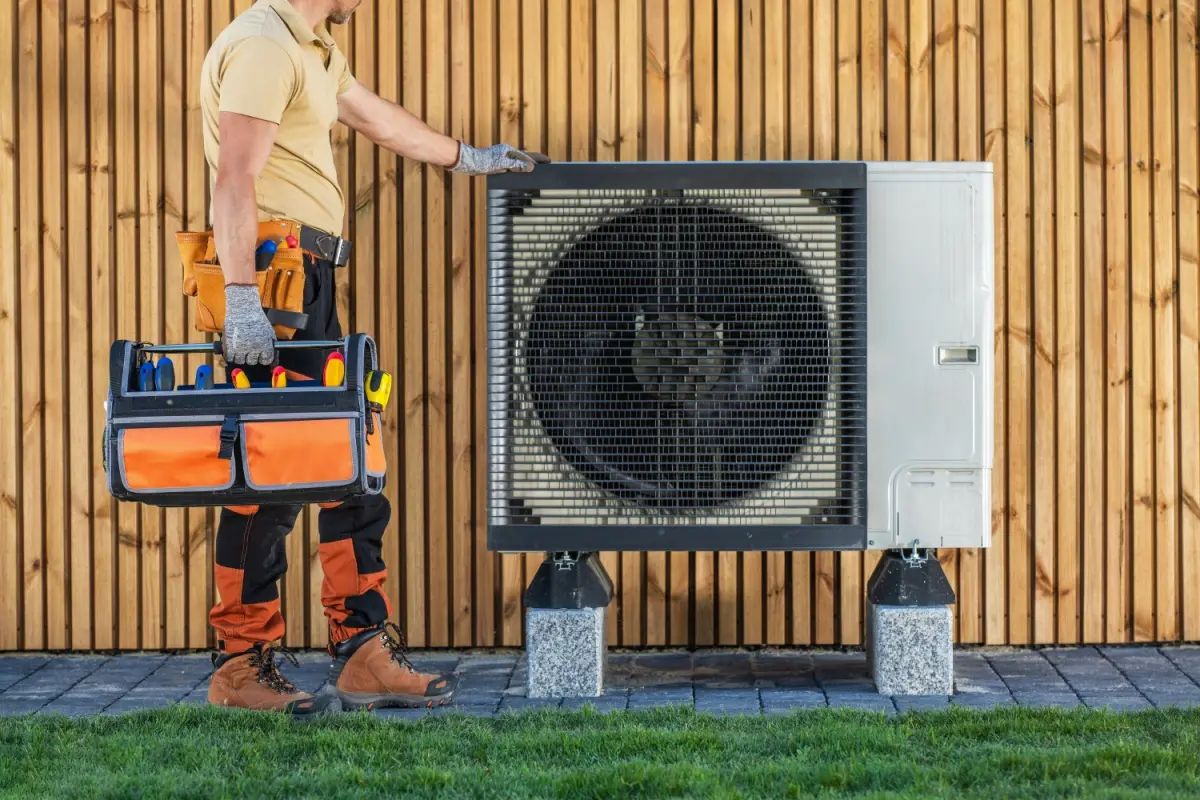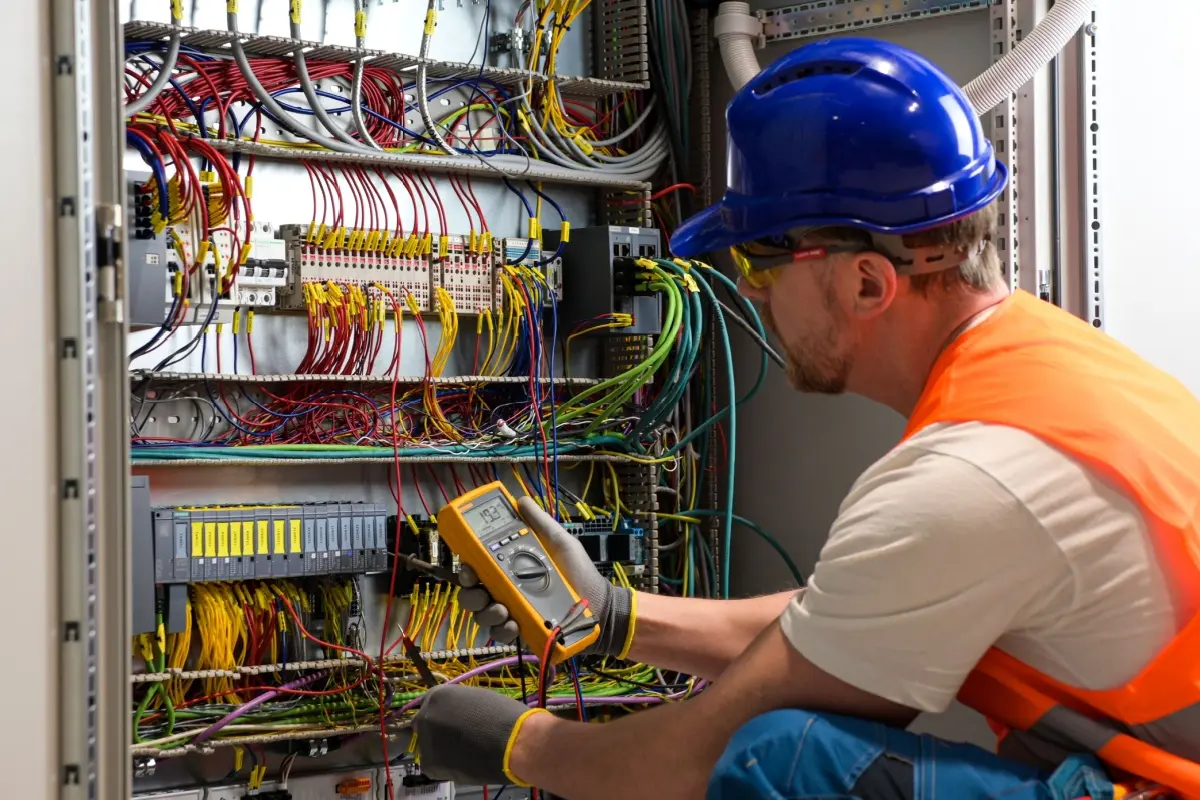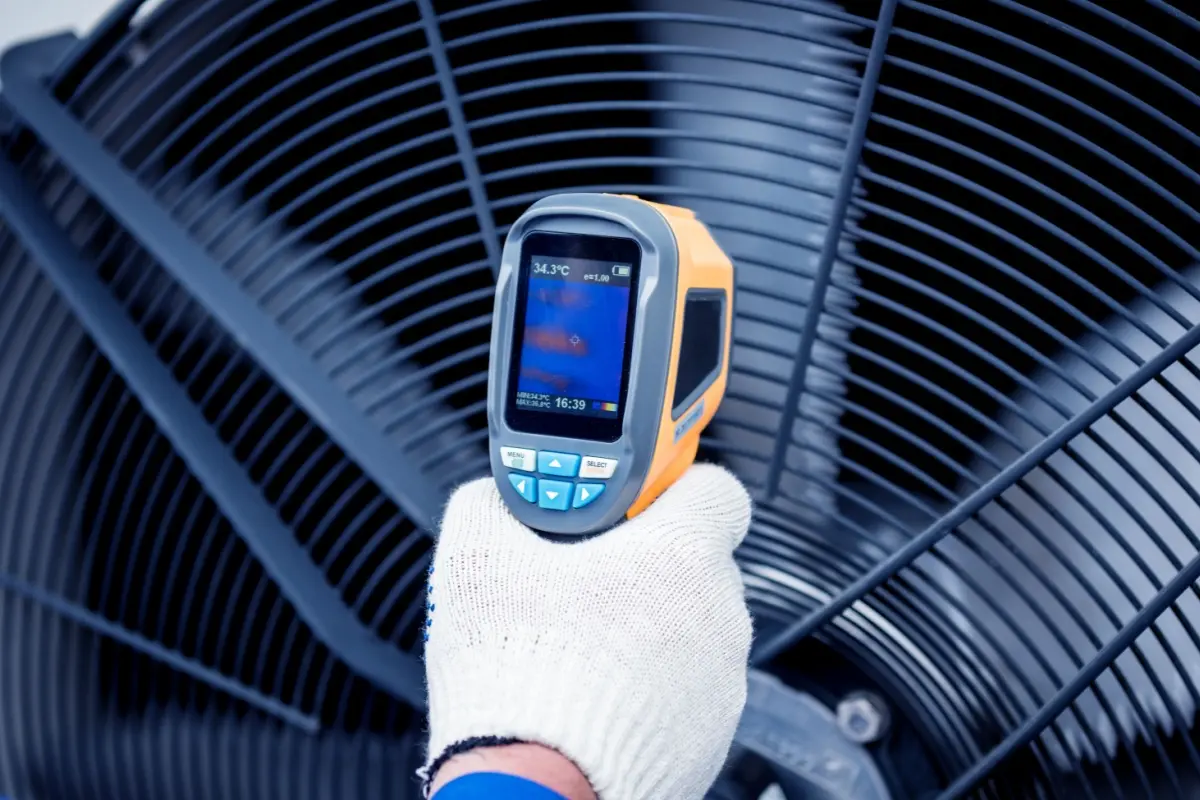An HVAC technician without tools is like a painter without brushes. Every task, from diagnosing system issues to installing new units and ensuring optimal performance, relies heavily on having the right equipment at hand.
Whether you’re just starting an HVAC business or looking to upgrade your current setup, the right HVAC tools list will streamline your daily operations and boost efficiency. Additionally, it ensures safety and allows technicians to deliver top-notch services while preserving the long-term health of your clients’ heating and cooling systems.

This guide will dive into the must-have HVAC tools — from basic hand tools and specialized gear to power tools and safety equipment — helping you stay ahead of the competition. Read on to learn what to keep in your toolkit.
HVAC Hand Tools
Hand tools are the foundation of each technician’s toolkit. These are the tools you’ll probably use every day to perform basic maintenance tasks and repairs, and ensure systems are running smoothly and safely. These are the most common HVAC hand tools you’ll need:
- Screwdrivers are used to remove and install panel crews, access internal components, and make fine adjustments. On top of having a range of both flathead and Phillips-head screwdrivers, get an 11-in-one screwdriver, which costs between $15 and $25. Insulated handles can protect against electrical contact, while magnetic tips can help keep screws in place during tricky installations.
- Nut drivers provide a snug, secure fit, preventing slippage that can round off bold heads. They help achieve the right torque and ensure the equipment stays securely fastened. Aim for 1/4 in., 1/2 in., and 5/16 in. nut drivers, ranging from $30 to $40.
- Needle-nose pliers reach tight spaces, bend wires, and help remove tiny components buried deep into a unit. They offer the dexterity needed to manipulate delicate parts without damaging them. Costs range from $5 to $25.
- Channel-lock pliers grip and turn pipes, fittings, and other components that require a firm hold. Their adjustable jaws make them versatile enough for different-sized components, saving time and effort. They typically cost between $20 and $45.
- Adjustable wrenches will be needed for loosening and tightening a variety of nuts and bolts. Get the 6-in. and 8-in ones that cost between $30 and $50.
- Refrigeration and service wrenches are specifically designed for HVAC valves and service ports. The average price is typically from $10 to $25.
- Tubing cutters are used to cut copper, aluminum, and sometimes PVC tubes cleanly and accurately. Proper cuts help prevent burrs and ensure a leak-free connection. These can cost between $10 and $500.
- Hex keys (or Allen wrenches) help adjust blower motors, fan blades, and other equipment. A full set of hex keys allows quick, easy adjustments in tight spaces, securing vibration-resistant connections. They usually cost from $15 to $50.
- Wire strippers are used to remove insulation from electrical wires cleanly and safely. High-quality strippers that cost up to $180 make for faster, more reliable electrical work.
- Crimpers help crimp wire connectors and terminals for secure, long-lasting electrical connections. They cost between $25 and $50 and prevent loose connections, which can lead to intermittent system failures and safety hazards down the line.
- Levels ensure components, such as thermostats, condensers, and furnaces, are perfectly horizontal or vertical.
- Markers and pencils are included in the basic HVAC tools list, as you need them to mark cut lines, notations, and reference points on ducts, equipment panels, or building materials.
- Inspection mirrors let you check wiring, seals, and bolts in confined spaces.
- Tape measures are needed to accurately measure duct lengths, clearances, and component sizes.
- Flashlights are needed for good visibility during work in some systems so you don’t miss any worn wiring, debris buildup, and leaks.
Specialized HVAC Tools
On top of these general tools, you’ll need some specialized HVAC tools to elevate your capabilities. These tools are specifically designed for heating, ventilation, and air conditioning work, helping you maintain efficiency and ensure compliance with industry standards.
Coil Fin Straighteners
When coil fins become bent from pressure washing, accidental bumps, or debris, they restrict airflow and reduce system efficiency. Cil fin straighteners are among the must-have air condition tools that restore bent or damaged fins on evaporator and condenser coils to ensure proper airflow. They help you gently realign the fins without damaging the coil itself.
Expect to spend between $10 and $20. These AC repair tools are available at almost any maintenance store or on Amazon.
Multimeter
This must-have HVAC tool tests electrical voltage, current, resistance, and continuity in HVAC circuits. A reliable multimeter is a safety device that detects faults early, prevents costly repairs, improves system reliability, and keeps your clients safe from potential electrical hazards. It ensures that components like thermostats, sensors, and motors function correctly.

Look for a multimeter on Amazon or Home Depot, where they usually cost from $20 to $40.
Manifold Gauge Sets
A manifold gauge set is a fundamental diagnostic tool that measures refrigerant pressure, diagnoses system performance, and verifies proper charge. It is used to check both high and low-side pressures.
Reading these pressures against temperature charts helps confirm if a system is properly charged or if there’s an underlying issue, like leaks or restrictions. Digital manifolds with built-in temperature sensors can further streamline the process, improving speed and accuracy.
The price of these sets can range from $50 to $150, depending on the brand.
Valve Core Removal Tool
Valve cores can wear out or become damaged over time, leading to refrigerant leaks and reduced system efficiency. This tool helps extract and install Schrader valve cores in refrigerant lines without fully discharging the system. A valve core removal tool lets you replace these tiny valves in an AC unit quickly and safely, saving time and resources.
Prices range from $20 to $80.
Vacuum Pumps
Moisture inside an HVAC system can lead to corrosion, freeze-ups, and lowered efficiency. A high-quality vacuum pump ensures you achieve the deep levels needed for a clean and dry environment. By removing air and water vapor from the system, you can create the optimal setting for proper refrigerant flow and long-term equipment health.
Get a vacuum pump from any specialized store or online from Amazon or Home Depot at $20 to $80.
Refrigerant Leak Detectors
These essential HVAC tools identify even the smallest refrigerant leaks in condensers, evaporators, and refrigerant lines. Detecting and addressing leaks early prevents costly refrigerant loss and environmental harm.
Modern electronic leak detectors are incredibly sensitive, making it easier to find pinhole leaks that manual inspection might miss. Rapid, accurate detection reduces downtime and ensures your clients’ systems run efficiently and sustainably.
Prices for these HVAC tools range from $25 to $200.
Handheld Electronic Thermometers
Unlike traditional analog thermometers, handheld electronic models provide quick, accurate digital records. They help you assess supply and return air temperatures in an HVAC circuit, monitor coil and duct surface temperatures, and verify that equipment operates within specified parameters. Armed with this data, you can more accurately diagnose issues, fine-tune system performance, and ultimately deliver greater comfort for your customers.

Plan to spend between $20 and $70 for these thermometers. A more advanced thermal imaging camera can cost upwards of $250.
Psychrometers and Hygrometers
Finally, psychrometers and hygrometers are the last instruments in our specialized HVAC tools list. Humidity plays a key role in HVAC performance, impacting comfort, mold growth, and energy efficiency. By measuring humidity and dry-bulb/wet-bulb temperatures, psychrometers and hygrometers help you diagnose indoor air quality (IAQ) issues and ensure balanced moisture levels.
Plan to spend between $25 and $80 for each of these tools.
HVAC Power Tools
In any well-rounded HVAC equipment list, you’ll find a wide range of power tools. Although you might not need these every day, they’re a must-have for speeding up some installations and maintenance. These are the most common power tools.
Cordless Drills and Drivers
A lightweight, cordless drill or driver helps you quickly secure wall mounts for furnaces, run fasteners through duct flanges, or install brackets for condensers. Opt for a cordless model with a long-lasting battery and multiple speed settings to provide better control, reduce strain, and let you work more efficiently without constantly searching for an outlet or extension cord.
Expect to pay between $20 and $80 for a power drill.
Reciprocating Saws
HVAC work often involves adapting existing structures, like cutting through a metal duct to fit a new branch line or trimming PVC condensate lines. A reciprocating saw, especially one with variable speed control and specialized blades, makes these tasks faster, cleaner, and more precise. You can maneuver the saw into tight spaces or awkward angles, letting you modify ducts or remove old components without causing damage to surrounding materials.
The price range for these saws is from $30 to $130, depending on the type and brand.
Angle Grinders
Angle grinders are used for grinding, smoothing rough edges, and cutting metal parts, bolts, and other hardware involved in HVAC installations. Ductwork and metal supports may need custom fittings, particularly in older buildings or complex installations. Therefore, these tools are ideal for this work, as they reduce air leaks and bolster structural integrity, which translates into a cleaner, more professional finish.
A typical angle grinder costs from $40 to $150.
HVAC Safety Tools And Equipment
In the HVAC industry, safety is more than a priority. Taking all the safety precautions is a professional obligation for which you’ll need the proper tools. Here is a safety HVAC tools list:
- Safety glasses or goggles shield the eyes from flying debris, dust, and metal shavings during cutting, drilling, or grinding tasks. Clear vision also helps maintain precision and ensure you spot potential hazards quickly.
- Cut-resistant gloves protect your hands from sharp metal edges, chemical contact, and electrical shock. Insulated gloves can also help maintain dexterity in colder environments while preventing frostbite.
- Respirators like dust masks filter out dust, mold spores, chemical fumes, and other airborne contaminants. Proper filtration also reduces the risk of respiratory issues over time.
- Earplugs or earmuffs protect your ears from the loud noise of motors, compressors, and cutting tools. Proximity to these tools without proper ear protection can lead to noise-induced hearing loss.
- Steel-toed boots prevent injuries from dropped tools, heavy equipment, and accidental slips. Good traction and slip-resistant soles help maintain stability on ladders, roofs, or wet surfaces.
- Fall-arrest and ladder safety equipment, including harnesses, guardrails, and properly rated ladders, reduce the risk of falls when working at heights. Stability tools and tie-offs ensure that rooftops and elevated ductwork remain accessible safely.
- Lockout/Tagout kits prevent accidental energizing of equipment during maintenance or repair. Proper lockout/tagout procedures are necessary for avoiding unexpected startups that can lead to serious injury.
- Voltage testers alert you to potential live electrical currents before you begin working on wiring or terminals. This prevents accidental shocks, ensuring a hazard-free electrical diagnostics and repairs environment.
- Fire extinguishers help quickly contain small fires caused by electrical issues or combustible materials.
- A first-aid kit equipped with antiseptics, basic medical supplies, and bandages helps address minor injuries on the spot.
Please note that this list is not all-inclusive. Other safety tools may be necessary for your specific situation. We recommend doing more research to ensure you have everything you need to keep you and your crew safe.
Software Tools
And finally, if you want to keep up with the trends of the HVAC industry, you should leverage the right software solutions to streamline your operations, improve accuracy, and enhance the overall customer experience. Software platforms help you with system design, scheduling, customer management, and even financial reporting. Below are some key categories of software tools that can make a difference in your daily operations.
Project Management and Scheduling Tools
Juggling multiple service calls, installations, and maintenance visits can challenge even the most organized technician. Project management and scheduling software like Procore and Buildertrend consolidate calendars, dispatching, and team assignments into a single platform.

With real-time updates and mobile access, you can instantly see who’s doing what and when, minimizing downtime and miscommunication. These streamlined workflows keep your team efficient and on-task and also ensure clients enjoy prompt, reliable service, leading to greater satisfaction and the potential for repeat business.
HVAC Accounting Software
An accounting software simplifies the management of invoices, payroll, and expenses, giving you a clear picture of cash flow and profitability. Tools like QuickBooks provide a clear view of revenue streams, overhead costs, and profitability metrics, enabling more informed decision-making and better resource allocation. Integrating accounting software into your overall digital workflow helps you accurately set budgets, forecast future growth, and maintain compliance with tax regulations.
Customer Relationship Management (CRM) Systems
CRM software like ServiceTitan or Jobber allows you to store client details, service histories, and maintenance records. These systems let you anticipate customer needs, recommend timely tune-ups, and provide personalized reminders.
A well-implemented CRM also makes it easy to track leads and follow up with prospects, ultimately turning more inquiries into booked appointments. When customers feel understood and well cared for, they’re more likely to return for future services and refer you to family and friends.
Point-of-Sale (POS) Financing Tool
Last but not least, if you want to stay ahead of the competition, consider offering financing to your customers. A POS financing tool offers flexible solutions for customers to invest in necessary upgrades, repairs, or installations without the burden of paying the full amount upfront, by integrating into your existing systems, and providing clear payment plan details. For HVAC businesses, this can lead to higher sales volumes and revenue growth and reinforce your role as a trusted partner.
How to Choose the Right HVAC Tools
Choosing the right HVAC tools isn’t just about picking what’s new or cheap. The right tools should be selected carefully to reflect your work needs and improve efficiency, safety, and profitability. Here’s a guide to help you invest wisely and build a toolkit that sets you apart.
- Understanding Your Core Needs
Start by asking yourself what your everyday tasks and daily workflows are. Are you frequently measuring airflow, testing electrical circuits, or repairing refrigerator lines? Identify which problems your customers request to solve regularly and prioritize the tools that support those functions.
For new businesses, this might mean focusing on a robust set of quality hand tools and a few specialized instruments. It could involve upgrading software solutions or adding advanced diagnostic equipment for more established operations. By narrowing down your core needs, you’re more likely to invest in tools that streamline your work rather than collecting dust in the back of your truck.
- Determine Your Budget
Once you know what you need, set a realistic spending budget. Consider both short-term cash flow and long-term value, as well as the average order value. Sometimes, it’s worth paying a bit more upfront for better durability and fewer replacements down the road. Your budget should guide your decisions, helping you strike a balance between cost and quality.
- Evaluate Quality and Durability
HVAC work often takes you into tight and tough spaces — hot attics, dusty basements, or outdoor units in harsh weather. Opt for the best HVAC tools by reputable brands known for their craftsmanship, reliability, and solid warranties. Higher-quality tools tend to last longer, perform better, and require fewer repairs.
- Consider Ergonomics and Ease of Use
Comfort and efficiency go hand in hand. Tools that are ergonomically designed, lightweight, and easy to operate help reduce fatigue, minimize the risk of injury, and improve overall job performance. When you and your team are comfortable and confident, you work more productively and accurately, translating into higher customer satisfaction and more profitable operations.
- Check for Compatibility and Versatility
Select tools that integrate seamlessly with your existing workflow and equipment. From software that syncs with your CRM and accounting platforms to multi-function hand tools that adapt to various tasks, focusing on compatibility saves time and simplifies training. Versatile, plug-and-play solutions keep your operations running smoothly and ensure you’re ready for the unexpected challenges each new job might bring.
- Plan for Future Expansion
As your HVAC business grows, so will your HVAC tools list. Perhaps you’ll take on more complex projects or expand your service offerings. Research vendor deals, bulk purchase discounts, leasing options, and industry forums for trusted recommendations. By anticipating future needs, you can invest wisely, avoid sudden large expenditures, and maintain a cutting-edge toolkit that supports both current demands and long-term business objectives.
By investing in the right mix of HVAC tools, safety gear, and software solutions, you position your business for long-term success. With proper budgeting and strategic planning, your toolkit becomes a powerful asset — improving efficiency, reliability, and customer trust. As the HVAC industry evolves and demands increase, staying equipped, adaptable, and innovative ensures you’ll always be ready to tackle any challenge your client base presents.


